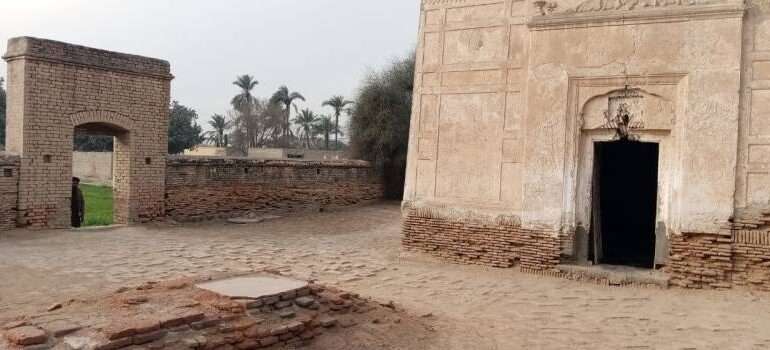The Shiri Garu Mandir, once a thriving symbol of faith and cultural richness, now stands as a silent testament to the neglect and disrepair inflicted by time, mismanagement, and political turmoil. Nestled in the heart of Layyah, Punjab, this ancient Hindu temple, believed to have been constructed in 1526 AD, is a relic of a once-vibrant community that flourished for generations. Yet, as the years pass, the temple faces a relentless decline, its historical significance now overshadowed by the neglect it suffers under the hands of the authorities of Pakistan.
The temple, which once served as a sacred space for Hindu worship and community gatherings, was abandoned by its creators following the partition of 1947. The mass migration of the Hindu community to India left behind a structure that would be forgotten in the annals of time. However, this physical abandonment should not have translated into the abandonment of responsibility for preserving the cultural and religious heritage of a community that had called this region home for centuries. Yet, that is precisely what has happened.
In theory, the Shiri Garu Mandir is a protected structure under the stewardship of the Mahkma Auqaf (Layyah). In practice, it is a crumbling reminder of the lack of commitment to safeguard the invaluable treasures that belong to the history of all South Asians, not just one religious group. The temple’s intricate carvings, ancient Hindi inscriptions, and the sacred diya-bati (oil lamps) tradition have been left to deteriorate, largely ignored by the state. The Shiri Garu Mandir, as one of the largest Hindu temples in the region, should be a focal point for tourism, research, and cultural pride. Yet, in its current state, it is a tragic symbol of how Pakistan’s disregard for minority heritage has stripped it of its vibrancy and its rightful place in history.
The lack of systematic conservation efforts speaks volumes about Pakistan’s attitude toward its religious minorities and their cultural landmarks. This temple, once the heart of a thriving community, now suffers from environmental degradation, infrastructural neglect, and abandonment by local authorities. Instead of being a place where Hindus and tourists alike could reconnect with their spiritual and cultural past, the temple is merely a shadow of its former self.
The reality of the situation is clear: Pakistan, as a nation, has failed in preserving the heritage of its minority communities. The Shiri Garu Mandir stands as a painful reminder of this failure. Instead of safeguarding the rich tapestry of history that once defined the region, Pakistan has allowed these cultural relics to decay, losing precious opportunities for tourism, research, and education. Its failure to protect such significant sites reflects a broader neglect of the Hindu community’s legacy within the country’s borders.
It is imperative that the government of Pakistan steps up to protect and restore the Shiri Garu Mandir, not only for the sake of the Hindu community but for the entire nation. The temple is more than just an old building; it is a living testament to the diverse religious and cultural fabric that once thrived in this region. Pakistan’s failure to protect this sacred site is a direct affront to the rich history of South Asia and a harsh reminder of how easily cultural heritage can be erased if not actively preserved.
Let us not allow the Shiri Garu Mandir to fade into oblivion. It is time for Pakistan to step forward and take responsibility for preserving this ancient monument, ensuring that future generations can learn from and appreciate the shared history of all communities that once called this land home.
